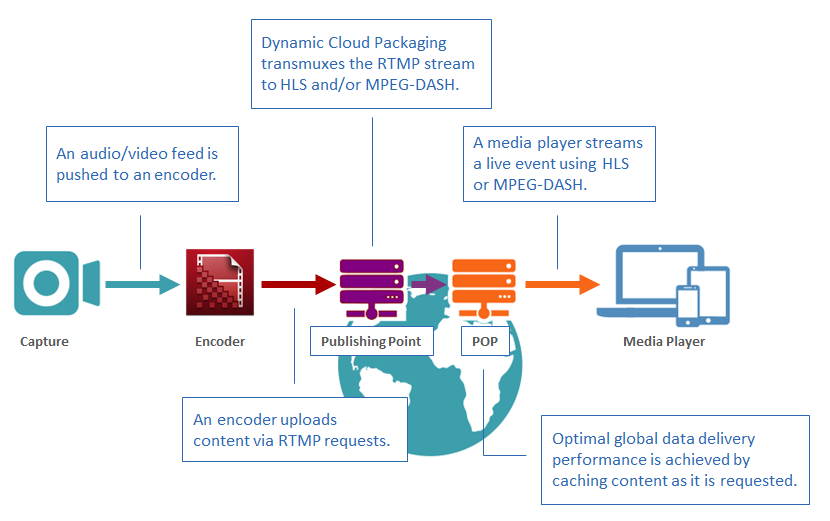Dynamic Cloud Packaging can stream live content to any standard HLS or MPEG-DASH player. It is able to do so by ingesting a live stream that was pushed by an encoder to our services via RTMP.
How Does It Work?
The entire process through which an audio/video feed is transmuxed and then streamed to clients around the world is illustrated below.

Transmuxing Workflow
Dynamic Cloud Packaging prepares an audio/video feed for playback through the following workflow:
- Encoder: An encoder pushes an encoded audio/video feed via RTMP to the closest publishing point.
- Dynamic Cloud Packaging: Dynamic Cloud Packaging transmuxes the video feed to HLS and/or MPEG-DASH.
Live Streaming Workflow
Dynamic Cloud Packaging streams a live event through the following workflow:
|
|
Step | Description |
|---|---|---|
|
1 |
Request |
A media player requests the playback of the live stream via HLS or MPEG-DASH. This request identifies:
|
|
2 |
CDN |
This request is routed to the POPIdentifies a location on our network through which users can request and receive content. closest to the viewer. A check will be performed to see whether the requested content has been previously cached.
|
|
3 |
Dynamic Cloud Packaging |
A Dynamic Cloud Packaging publishing point will deliver the requested stream via the POP closest to the viewer. |
More Information
- Tutorial
- Requirements
- Interaction with the HTTP Large Platform
- Preventing Unauthorized Viewing
- Purging Live and On-Demand Content
Edgecast CDN